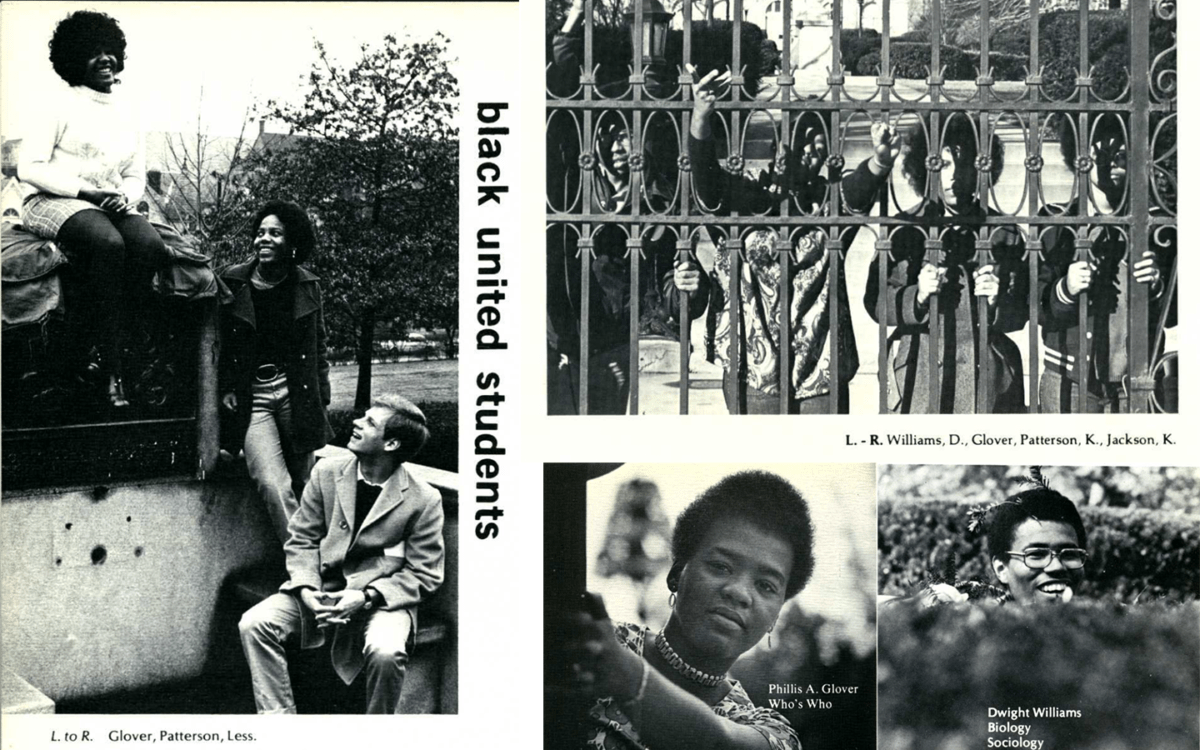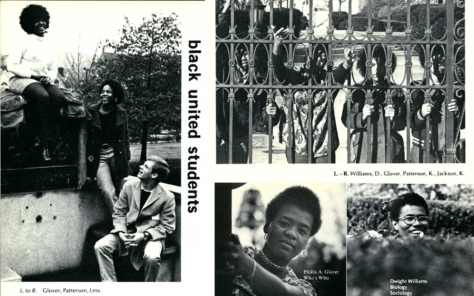
The 1970s
WASHINGTON, PA (March 11, 2021)—Women may have been new to the W&J campus in 1970, but Black students weren’t.
It was curious, then, to students like Phyllis Glover Cucchiani ’74—one of the first black women on campus—that there was no sign of an organization dedicated to students of color, creating an invisible barrier for the Black voice in student government and other areas of campus.
“We, the students, thought that we wanted some way to impact the overall campus life and to bring diversity to what was really just marshmallow,” Cucchiani said. “Our whole motivation was to be able to input to greater campus life and the process one had to go by. As black students, we had no organization prior to that, and no way to impact student entertainment or educational activities.”
Getting the organization established, however, was easier said than done. The number of black students at the time was less than 10, and they faced administrative resistance toward establishing a group dedicated to such a small population. The students, however, saw the opportunity that staff at the time did not: to foster community for the black students and allow their representation on campus to grow. They could be an educational organization, not only for themselves, but for the greater student body to increase cultural understanding of the greater African American experience.
To get approved and have a share of the student affairs budget for programming, the students were told they needed to have two faculty sponsors. English professors James Gargano, Ph.D. and Richard Easton, M.A. co-signed the group and helped them refine their bylaws and constitution to pitch to the faculty approval board.
“We got approved, which was not easy. No one could see why we couldn’t just be quiet and go into the other organizations,” Cucchiani said.
Though their numbers were sparse, that didn’t stop the students from creating a robust line of programming for the College, bringing musicians, artists, speakers to campus. In the beginning, attendance was low, but soon enough, more white students began to participate in BSU events, and the organization was able to justify their funding and bring bigger names to campus.
The environment for Black students improved in those years, allowing them to create fond memories of their collegiate experience. They were also able to partner with various organizations across campus to combine funding for higher profile events.
“I really had fun at W&J. After the Black Student Union becoming more visible, people were more inclusive,” Cucchiani said.
Still, life for students of color was not easy on campus, and many would transfer to other institutions with greater representation of Black students or more inclusive campuses. Cucchiani recalled a homecoming celebration during her time as a student where a black woman—her classmate Helen Holmes—was elected homecoming queen. What should have been a great memory for her classmates, though, was tinged with unfair treatment; a yearbook spread neglected to identify Holmes as the homecoming queen, Cucchiani said. Holmes later transferred to Spelman College, finishing her collegiate studies there.
These challenges made it difficult for students to fully integrate into the College of W&J, and so when it came time for Cucchiani and her classmates to graduate, they didn’t have anyone to pass their mantle on to.
“We couldn’t find the next generation. We had members who lived locally, that could have had more interaction with the campus, but when we graduated there was no one identified to take it over,” Phyllis said.
Shortly after that, cultural pressures and a lack of leadership caused the BSU went dormant, but it wouldn’t sleep forever—changing perspectives and a new focus on cultural inclusion paved they way for Will Thomas ’91 and Cynthia Fulford ’93 to reawaken it in the early 1990s.
About Washington & Jefferson College
Washington & Jefferson College, located in Washington, Pa., is a selective liberal arts college founded in 1781. Committed to providing each of its students with the highest-quality undergraduate education available, W&J offers a traditional arts and sciences curriculum emphasizing interdisciplinary study and independent study work. For more information about W&J, visit washjeff.dev, or call 888-W-AND-JAY.



